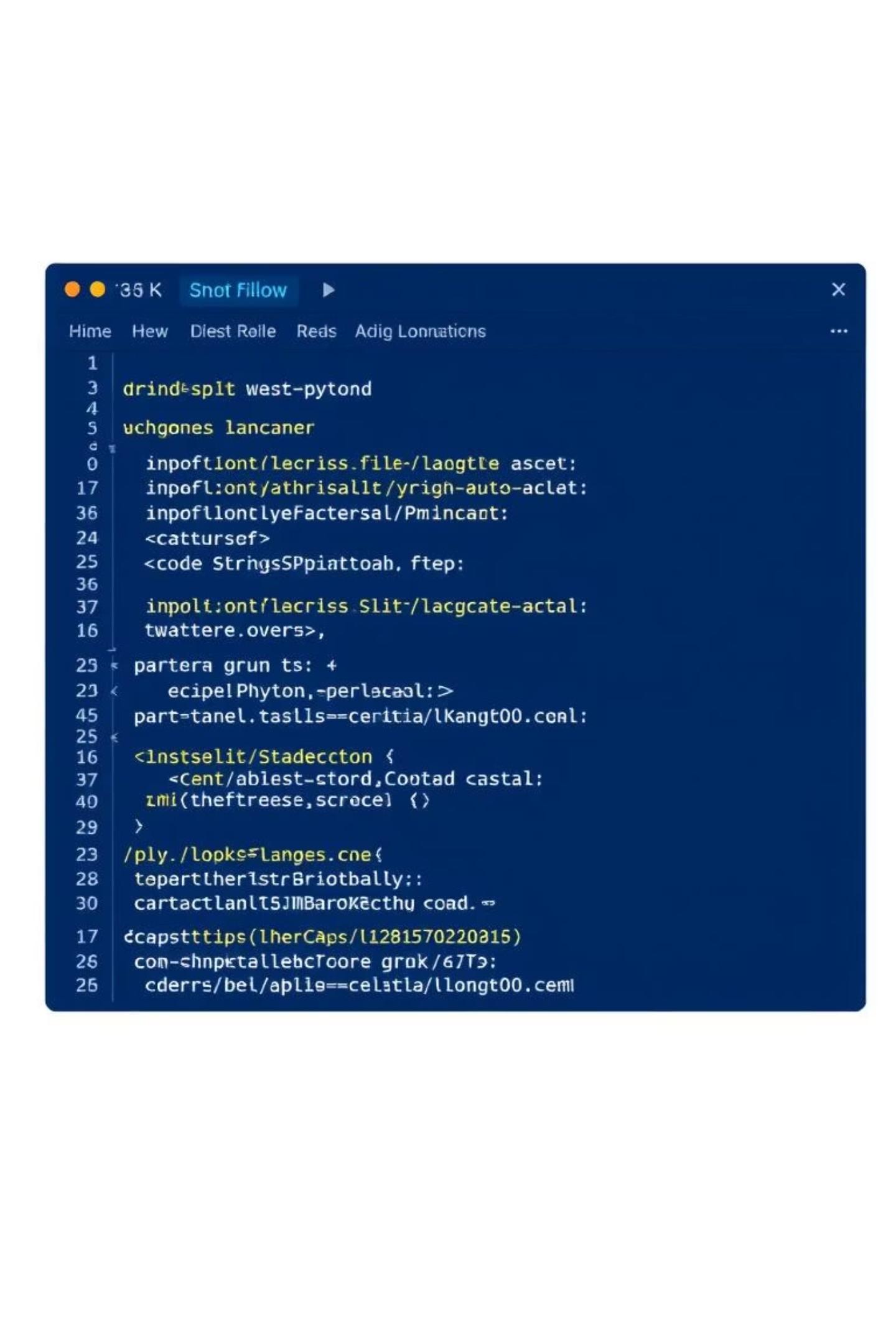

Mastering Python's Split String Method
Explore the versatility of Python's string.split() method, a fundamental tool for data manipulation and parsing in your Python projects.

Agenda: Unpacking String Operations
Introduction to String Splitting
Understanding the core functionality and syntax of .split().
Basic Delimiter Usage
Splitting strings by spaces, commas, and custom characters.
3
Controlling Splits with maxsplit
Limiting the number of splits for precise parsing.
4 Handling Multiple Delimiters
Strategies for splitting strings with varied separators.
Introduction to the str.split() Method
What
is str.split()?
• A powerful built-in method in Python.
• Divides a string into a list of substrings.
• Essential for parsing data from files or user input.
Syntax Overview
string.split(separator, maxsplit)
• separator: The delimiter string.
• maxsplit: Max number of splits to perform.

Basic Delimiter Usage: Common Scenarios
Splitting by Spaces
(Default)
When no separator is provided, .split() automatically handles whitespace, including tabs and newlines, and discards empty strings from the result.
Custom Delimiters
Specify any string as a separator to divide your text. This is crucial for parsing CSV data or log files where delimiters are explicit characters like commas or semicolons.
Empty Strings
If a string starts or ends with the delimiter, .split() will include empty strings in the resulting list. Careful handling is often required to filter these out.
"Hello World".split()#
Output: ['Hello', 'World']
"apple,banana,cherry".spli t(',')#
Output: ['apple', 'banana', 'cherry']
",a,b,".split(',')#
Output: ['', 'a', 'b', '']
Controlling Splits with maxsplit
The maxsplit argument limits the number of splits, which is useful when you only need to process a specific number of fields and keep the rest of the string intact.
Example: Limiting Splits
text = "one two three four five"parts = text.split(" ", 2)# Output: ['one', 'two', 'three four five']
Here, the string is split only twice, resulting in three elements. The third element contains the rest of the original string.

Advanced Techniques: Handling Multiple Delimiters
While python split string handles only one delimiter at a time, you can combine it with regular expressions or loops for more complex scenarios.
1 Using re.split()
The re module's split() function allows splitting by multiple delimiters using regular expressions.
This is ideal for parsing highly unstructured text.
import rere.split('[;, ]', 'a;b,c d')#
Output: ['a', 'b', 'c', 'd']
2 Chaining replace() and split()
For a fixed set of delimiters, replace all but one with a common delimiter, then use .split(). This approach is simple and efficient for many use cases.
text = "apple;banana,cherry"text.replace(';', ',').split(',')# Output: ['apple', 'banana', 'cherry']
Key Takeaways: Enhancing Your Python Skills
Mastering str.split() and related methods is crucial for efficient text processing in Python.
1
Versatile Parsing
Use .split() for simple, delimited text. It's your first choice for predictable data formats.
3
Advanced Delimiting
Employ re.split() for complex patterns and multiple delimiters, expanding your parsing capabilities for messy data.
2
Precision with maxsplit
Leverage maxsplit to control output length, especially when dealing with free-form text or log entries.
4
Efficiency Matters
Choosing the right method ensures optimal performance and readability in your Python applications. Always consider your data structure.

Address: 319 Clematis Street - Suite 900, West Palm Beach, FL
33401
Email: support@vultr.com
Website: https://www.vultr.com/
